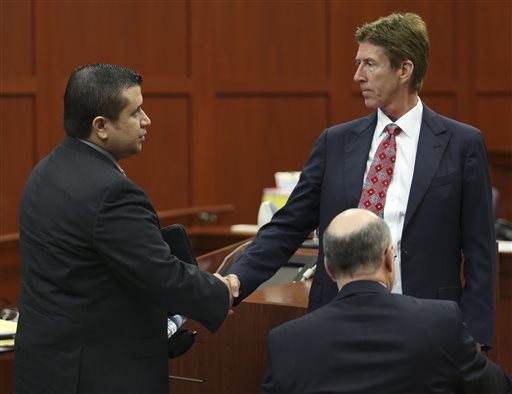The most dramatic moment yet of the George Zimmerman trial yet occurred during the defense’s closing argument Friday morning, when attorney Mark O’Mara paused for four minutes to illustrate a long gap in the prosecution’s timeline of events.
The television cameras zoomed in on the digital clock, and panned slowly across the stony faces of the spectators as O’Mara walked back to his table, conferred with counsel, checked his papers, then–after what seemed an eternity–returned to continue his argument to the jury.
In case you weren’t watching live, those four minutes of silence were longer than the original “Sound of Silence” by Simon and Garfunkel, which might seem like a fairly complicated tune but only clocks in at 3:05.
Those four minutes of eerie silence in the court were a powerful illustration–and experience–of what reasonable doubt means in the defense’s theory of the case.
If prosecutors could not explain what Trayvon Martin was doing for four minutes instead of walking home–or running, as state witness Rachel Jeantel testified–how could they claim that Zimmerman had set out to kill Martin? If he felt threatened, why didn’t he leave? And wasn’t it more likely that Martin had lain in wait for Zimmerman and started a confrontation?
O’Mara’s argument continued, providing jurors with an account of events from start to finish–which, oddly, the prosecution had failed to do in its closing argument, preferring to focus on Zimmerman’s credibility.
The defense stressed the important of the “reasonable doubt” standard, noting that even if the jury thought it was “highly unlikely” that Zimmerman acted in self-defense, that was not enough to convict him.

COMMENTS
Please let us know if you're having issues with commenting.